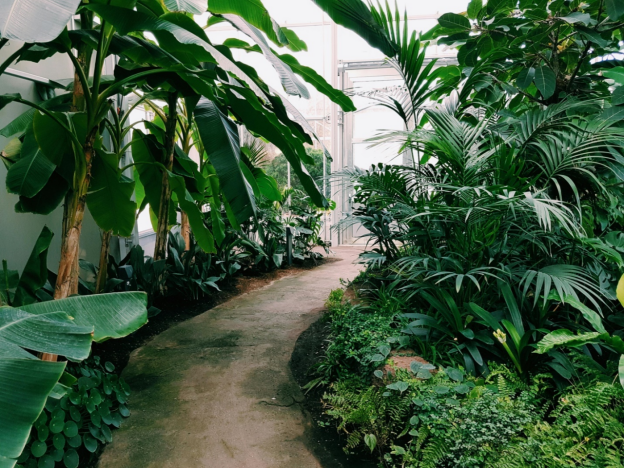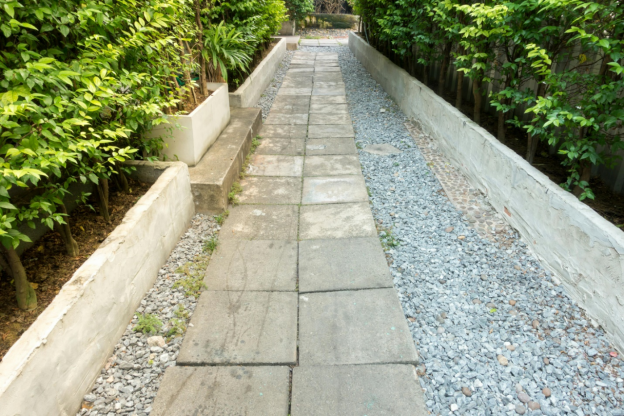
Businesses face the challenge of maintaining vibrant landscapes among increasing concerns over water scarcity and environmental sustainability. The need for innovative landscaping solutions that balance visual appeal with ecological responsibility has never been more pressing in Clearwater.
This is where the concept of resilient landscaping comes into play—a harmonious blend of design, technology, and nature that ensures beauty and sustainability coexist. We invite Clearwater businesses to envision a future where their landscapes not only boost their curb appeal but also contribute to the well-being of the planet.
The Need for Resilient Landscaping in Clearwater
Clearwater's climate is characterized by its hot summers and mild winters, a pattern that places a significant strain on traditional, water-intensive landscaping practices. Businesses in Clearwater are increasingly recognizing that the landscapes need to be as tough as they are visually pleasing. This realization is driving a shift towards resilient landscaping solutions.
Adopting resilient landscaping practices offers a multitude of benefits, both environmental and financial. Environmentally, these practices support local biodiversity by creating habitats for native wildlife and reducing the need for chemical fertilizers and pesticides. From a financial perspective, resilient landscaping can lead to substantial cost savings for businesses. Landscapes that require less water, maintenance, and chemical treatment incur lower operational costs over time.
Businesses in Clearwater have a unique opportunity to lead by example in water conservation efforts. By integrating drought-tolerant plants, efficient irrigation systems, and innovative landscaping techniques, businesses can significantly reduce their environmental footprint while setting a precedent for sustainability in the community.

Embracing Native Plant Species
Native plants thrive in their natural habitat without the need for extensive irrigation, fertilizers, or pesticides. As a result, landscapes featuring native plants demand less water and maintenance, aligning with Clearwater's need for water conservation and sustainable landscaping practices. Furthermore, native plants provide essential support to local wildlife, including pollinators such as bees, butterflies, and birds.
Top Native Plant Recommendations
1. Saw Palmetto (Serenoarepens)
2. Muhly Grass (Muhlenbergiacapillaris)
3. Florida Tickseed (Coreopsis Florida)
Incorporating Native Plants into Business Landscapes
To successfully integrate native plants into commercial landscapes, businesses should start with a thoughtful design that considers the specific conditions and requirements of their property. This might include assessing sun exposure, soil type, and moisture levels to select the most appropriate native species.
Working with a local landscaping professional who specializes in native plants can provide valuable guidance and ensure that the selected species will thrive in their new environment. These experts can also advise on sustainable landscaping practices that complement native plantings, such as mulching and efficient irrigation systems.
Efficient Irrigation Systems
Efficient irrigation systems are designed to minimize water wastage by delivering water directly to where plants need it most: their roots. Unlike traditional sprinkler systems that can lose a significant amount of water to evaporation and runoff, efficient systems use advanced technologies to optimize water use. The goal is twofold: to conserve water and to promote healthier plant growth by avoiding overwatering or underwatering.
Key Components of Efficient Irrigation Systems
1. Drip Irrigation
2. Soaker Hoses
3. Smart Irrigation Controllers
4. Rain Sensors
5. Soil Moisture Sensors

Implementing Efficient Irrigation in Clearwater Businesses
Transitioning to an efficient irrigation system begins with a thorough evaluation of the current landscaping and watering practices. Businesses should consider the specific needs of their landscapes, including plant types, soil conditions, and exposure to sun and wind.
Additionally, ongoing maintenance of the irrigation system is crucial for sustained efficiency. Regular checks for leaks clogged emitters, and misaligned sprinkler heads, along with seasonal adjustments to the watering schedule, are essential practices to ensure the system operates at peak efficiency.
Xeriscaping Techniques for Water Conservation
Xeriscaping is built around seven core principles designed to optimize water use and promote plant health. These principles include planning and design, soil analysis and improvement, efficient irrigation, appropriate plant selection, the use of mulch, practical turf areas, and regular maintenance. Together, these components form the foundation of a successful xeriscape that balances aesthetics and sustainability.
Essential Components for Xeriscaping
1. Planning and Design
2. Soil Analysis and Improvement
3. Efficient Irrigation
4. Appropriate Plant Selection
5. Use of Mulch
6. Practical Turf Areas
7. Regular Maintenance
Implementing Xeriscaping in Clearwater Businesses
For Clearwater businesses, transitioning to a xeriscape can start small, with incremental changes to plant selections and irrigation practices, or through a complete redesign of the landscape. Engaging with landscaping professionals who specialize in xeriscaping can provide valuable guidance and ensure that the principles are correctly applied for maximum benefit.
The beauty of xeriscaping lies in its versatility and adaptability, allowing businesses to create unique, attractive landscapes that reflect their commitment to sustainability and water conservation. As more organizations adopt these practices, they not only enhance their own properties but also contribute to a more sustainable and resilient community in Clearwater.

Additional Drought-Tolerant Landscaping Tips
While integrating native plant species, efficient irrigation systems, and xeriscaping techniques lays a solid foundation for resilient landscaping in Clearwater, there are additional strategies that businesses can employ to further reduce water usage and maintenance demands. These supplementary tips not only enhance the drought tolerance of your landscape but also contribute to its aesthetic appeal and environmental sustainability.
1. Incorporate Hardscaping Elements
2. Optimize Landscape Layout
3. Utilize Mulch Wisely
4. Choose Synthetic Grass for Lawns
5. Implement Rainwater Harvesting
6. Select Drought-Tolerant Ground Covers
7. Educate and Involve Your Team
While drought-tolerant landscaping practices ensure your property remains beautiful and sustainable, unforeseen emergencies like storms and floods can pose significant risks. That's where Flood Pros USA comes in, offering comprehensive and professional restoration services tailored to your needs.
Our team is ready to provide emergency water damage cleanup, ensuring a swift return to normalcy for your business. We understand that time is of the essence, which is why we offer 24/7 flood cleanup assistance in Clearwater.
Contact us today for effective flood damage repairs.
Subscribe to Flood Pros USA's Blog







Comments